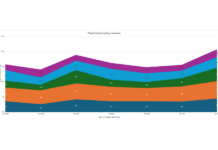Global asset managers should take note of the investment opportunities presented by China’s pension fund market as the space embraces much-needed reform and technological innovation, according to a new report. The paper, written by the Asia Securities Industry & Financial Markets Association (ASIFMA) and KPMG China, entitled ‘China Pensions Reform: Winning strategies for global asset managers amid evolution in retirement market’, outlines how amid an aging population the introduction of private pensions makes China an attractive proposition for global investment.

Eugenie Shen, managing director and head of ASIFMA asset management group, said, “Given the demographic change in China there is an urgent need for reform as the current pension system will be unable to cope. This means that there are opportunities for global asset managers in China’s pension market as the nation’s retirement programme undergoes a major programme of reforms. In particular, the recent introduction of private individual pensions has created a new and potentially massive market.”
The report outlines how the wider pensions market could grow to RMB 28 trillion (US$3.9tn) by 2030. Retirees currently make up a fifth of the population and that number is expected to double by 2050. Although China began with basic pensions in 1991, the country’s most significant reform was the introduction of individual private pensions, which alone is expected to grow to RMB 4 trillion under the current regulatory landscape by 2030 and could be RMB 7 trillion if the expected reforms are carried out. Termed Pillar 3, these private pensions began trials in 2018 with Pension Target Funds while the individual account scheme officially rolled out in November 2022, followed by commercial pension pilot testing that started in 2023.
Insurance, wealth management and deposit products are also in the mix, targeted at different customers with different risk profiles. Firms operating in investor education, customer service, product development, risk management, technology enablement and operational set-up are set to benefit the most, the report suggests. KPMG China head of securities and asset management, Vivian Chui, said the potential of this area of the pensions market is a promising form of investment.
“Already around 30 million tax-deferred individual accounts were set up shortly after they were launched last November. We see particular potential here for foreign players who have experience in pensions,” she noted.
With China’s aging population, the rising cost of healthcare and inadequate pensions provisions bearing down, the report notes that it is expected that the government will streamline regulatory governance to make it easier for firms to participate in the market. The types of eligible investments for pension products could also be relaxed further. Greater diversification, including more access to overseas products, would help pension savers to obtain stable, long-term risk-adjusted returns, the report said.
“As the Pillar 3 framework is rolled out, key success factors will include product design, where overseas firms already have considerable experience. Product distribution is another key factor, to ensure that they reach the large potential customer base and have access to data from customers.” concluded Chee Hoong Tong, partner, asset management, KPMG China.
©Markets Media Europe 2023
©Markets Media Europe 2025

























